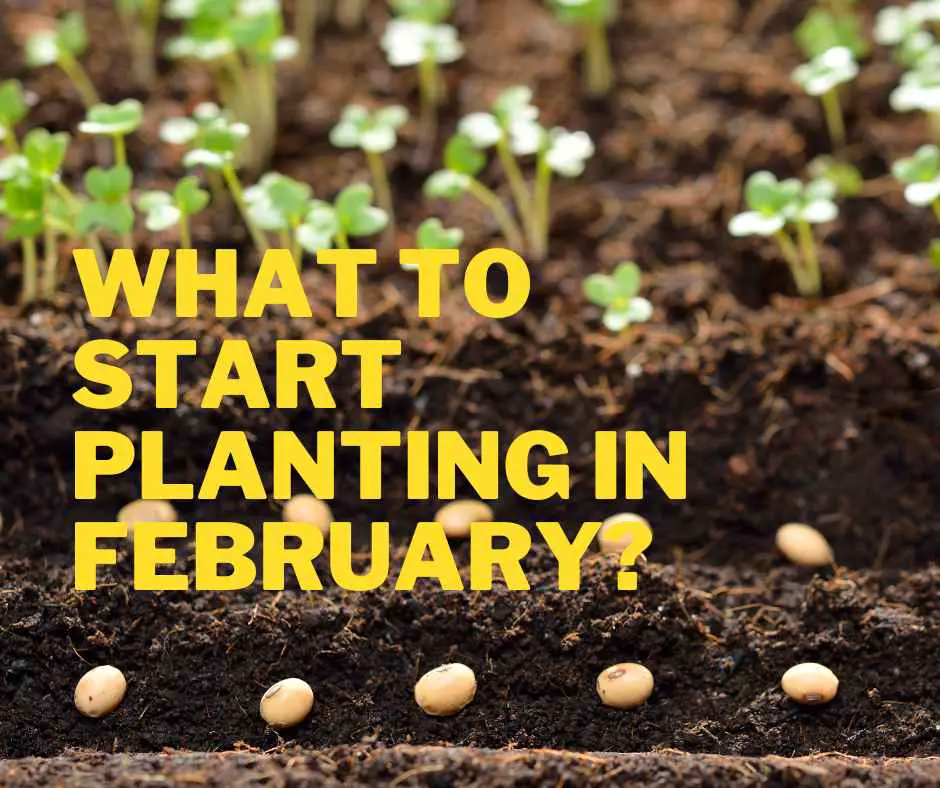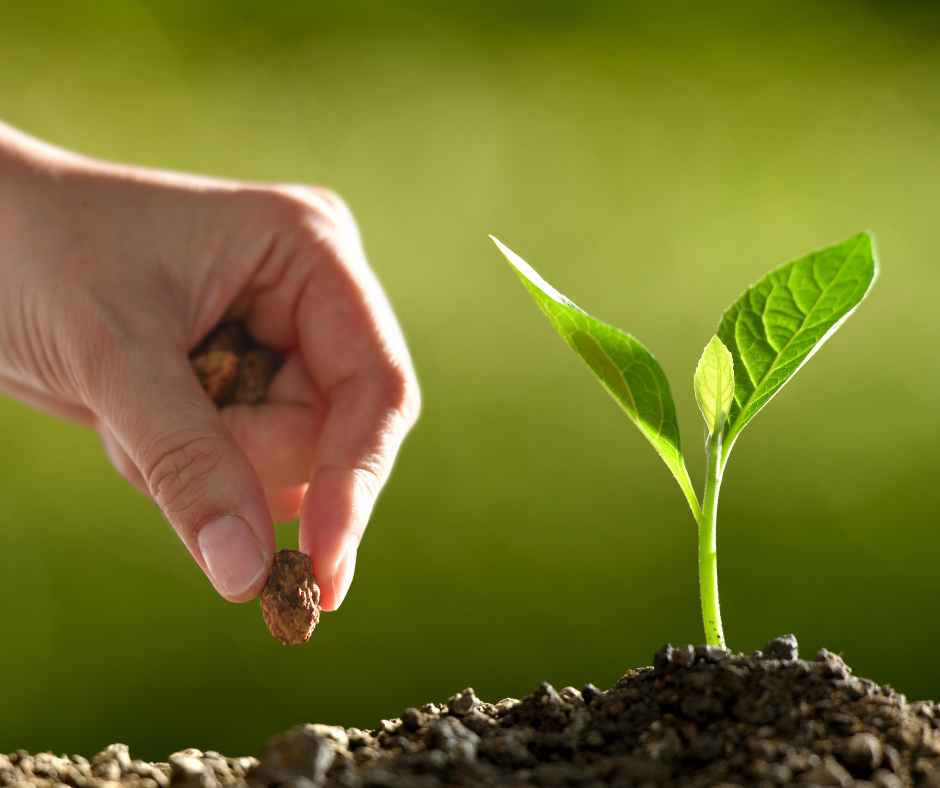As the frost season in the winter pass by, which is usually in February all the gardeners start thinking and looking for the plants and vegetables to be planted this month. In some areas still, February has the frost, but you can start planting seeds indoors as well.

For that side to be covered gardeners and especially new gardeners look for the plants to be planted or at least to start. That’s why we are going to discuss what to start planting in February so that you can have a good supply of vegetables for the kitchen and fruit for the family.
Why start planting in February?
February is a good time to plant in many regions because it is typically the start of the gardening season. The weather is starting to warm up, and frost is less likely. Many plants, such as vegetables, can be started indoors in February and then transplanted outside later in the spring.
It is also a good time to plant trees, shrubs, and perennials, as the soil is still cool and moist, which helps with root establishment. Additionally, February is a good time to plan your garden and order seeds or plants for the upcoming growing season. This time helps in a good supply of plants to be planted.
There are many benefits of starting a plantation of plants and vegetables in February. To understand its importance some of the important ones are as follows:
Early Start for the plantation Season
Planting in February allows you to start your garden early, giving your plants a head start on the growing season. This can be especially beneficial for warm-season crops like tomatoes and peppers that need a long growing season to mature. This gives an edge as you get healthy saplings to plant.
Starting seeds indoors in February
February is a great time to start seeds indoors for later transplanting. This allows you to get a jump on the growing season and have strong, healthy plants ready to go in the ground when the weather warms up. Because in some regions there may be frost in February as well.
Good soil condition for planting
The soil is still cool and moist in February, which is ideal for root establishment. This can be particularly beneficial for trees, shrubs, and perennials planted for the first time. This soil gives an edge to the plant to establish roots faster, with less care being provided.
Lower Risk of Frost
As the weather starts to warm up in February, the risk of frost is less likely. This means that you can start planting your garden without worrying about frost damage. In some regions, it might not be the case, but still, the weather is better than in December and January, and still, you can go for indoor starting.
Learning and planning the garden and plants
February is a good time to plan your garden and order seeds or plants for the upcoming growing season. This allows you to have everything you need to start planting when the time is right. You can learn the pros and cons of the particular plants, as well as you can set the arrangement and order of the plants being planted.
Cautions while starting planting in February

When planting in February, it is important to be mindful of the weather conditions in your area. If the ground is frozen or too wet, it can be not easy to plant. Additionally, depending on your location, there may be a risk of frost or freeze damage to newly-planted seeds or seedlings.
If you are planting in a cold climate, it may be best to wait until the soil has warmed up a bit before planting. It’s also important to check the hardiness zones of the plants you’re considering; to ensure they are suitable for your area’s climate.
In February, it is important to consider the average temperature and frost dates for your location. Some plants, such as cold-hardy vegetables like broccoli and cauliflower, can be planted in early February in areas with mild winters.
However, in areas with colder temperatures, it may be best to wait until later in the month or even early March to plant. Additionally, soil preparation is important to ensure the soil is well-draining and has the appropriate amount of nutrients for the plants you will be planting.
You can also go for indoor sowing of the seeds in February if the colder climate and frost are the case. It will give you the edge and you will get good and healthy plants for the plantation.
What to start planting in February
There are many fruits, vegetables, and shrubs that can be started for the plantation in February. However, we are going to mention some of the important ones which are much beneficial for the kitchen.
Broccoli
Broccoli is the cool season plant. It can survive in cold conditions like little freezing and frost. You can start with that to get a good supply for the kitchen.
Cabbage
Cabbage is almost same as the broccoli. You can go for it as it can survive mildly cold environments.
Carrots
Carrots are root vegetables. These vegetables usually prefer the colder season to grow. They can even survive mild frost as well.
Cauliflower
You might have seen the cauliflower in the summer, but the winter varieties are also available. You can even plant at the end of January and at the start of February as well. It can survive easily in frost conditions.
Garlic
Garlic is a vegetable that is used in almost every dish. It is planted in the fall or early winter for a spring harvest. It can be started in February easily.
Kale
Kale is a leafy green vegetable that can survive the cool season easily. When planted in February you will get a good supply of kale at the right time.
Lettuce
As we know lettuce has many usages. From many dishes to salads it is available. this vegetable is also panted in February.
Onion
Onions which are the main ingredient of every dish, and are even used in fried and raw form as well are planted in the fall or early winter for a spring harvest. These can survive the mild cool temperature easily.
Peas
Peas are cool-season legumes that can handle frost and light freezes. Yes, these are planted in two seasons. you can start them in February as well.
Radishes
Radishes are root vegetable that matures quickly and prefers cooler weather. Its nature is also cold so you can start them in February and can be used in many salads and can be eaten raw as well.
Spinach
Spinach is a cold-season leafy green vegetable that has many minerals and nutrients in it. You can easily start it in February to get a good and constant supply in the spring.
Beets
Beets are root vegetable that prefers cooler weather and has many benefits for growing. We all know it is grown on a commercial scale for the production of sugar as well. So, you can have beets in February and can enjoy them raw as well as cooked.
Turnips
Turnips are root vegetable, belonging to the family of beets that prefers cooler weather. These are eaten raw as well as cooked. You can start it in February.
Brussels Sprouts
If there is harsh frost then sow the Brussels sprouts indoors in a tray or a pot, otherwise go with the open garden as it can handle the mild frost and freeze.
Lavender
Lavender is a great shrub to be started in February. You need to sow the seeds of lavender in February and you will get the saplings after 20-25 days. It is a great shrub to plant in the garden.
Raspberry
Raspberry fruit is a great choice for starting the plantation in February. You can go for sowing of these seeds, and you will be able to transplant their saplings in April or May. These fruits have very good taste.
It’s important to note that the best time to plant fruits and vegetables depends on the specific climate and weather conditions in your region. It’s always recommended to check the frost dates and the soil temperature in your area before you start planting.
Otherwise, you can opt for the sowing of seeds in indoor settings. It will always support you in the good supply of healthy saplings for the plantation of vegetables and fruits. You will get good growth of the plants in this way.
In short, you can say that February is the preparation and action month. You can start many of the plants by direct plantation, or by sowing the seeds. Also, you would be able to see that it gives a great head start for the plantation as you will be able to get good and healthy plants to be planted.

